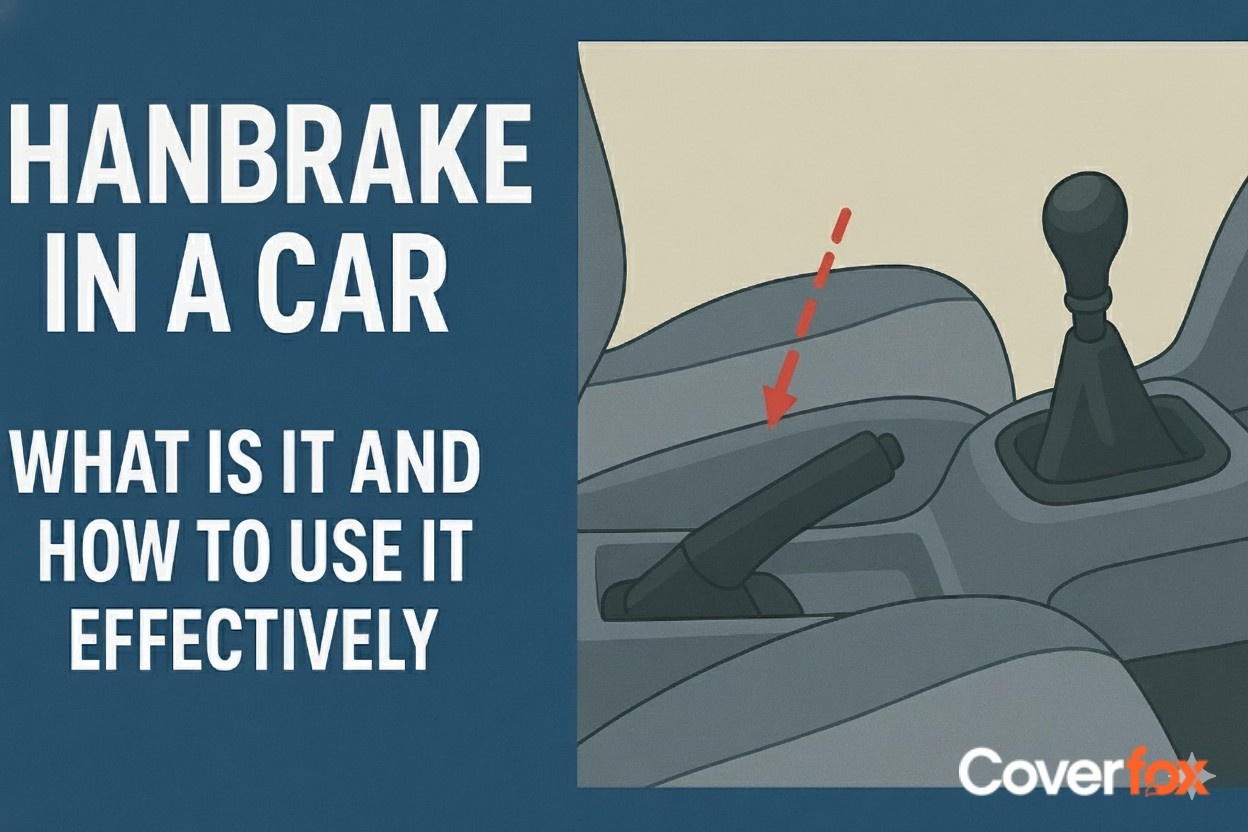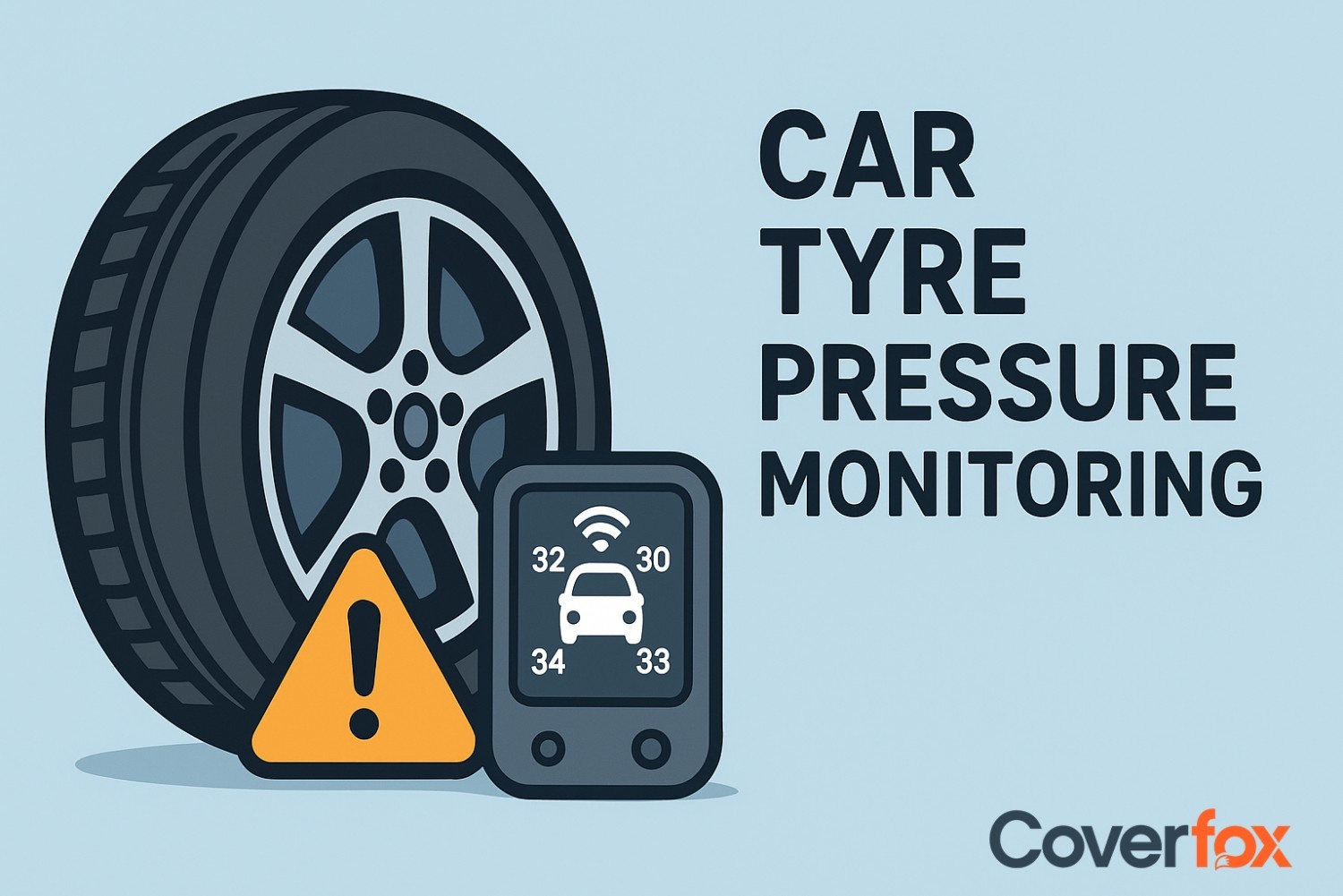The handbrake in a car, also called the parking or emergency brake, comes in various types — manual lever, pedal, electronic, stick, and hydraulic — each offering different levels of control and convenience. It works by locking the rear wheels through either a cable or an electric motor, keeping the vehicle steady when parked or on inclines. Modern cars with Electronic Parking Brakes (EPB) add features like auto-hold for easier hill starts and enhanced safety.

The handbrake, also known as the parking brake or emergency brake, is a crucial safety feature in every car. While its main purpose is to keep the vehicle stationary after parking, it also plays a vital role in preventing rollbacks on steep slopes and providing emergency braking if the main brakes fail. Using the handbrake correctly enhances both driving safety and vehicle control.
Fun Fact: In motorsports, drivers often use the handbrake to perform controlled slides or “drifts” — a technique that originated from rally racing!
What is a Car Handbrake?
A car handbrake is a secondary braking system that keeps the vehicle stationary when parked by locking the rear wheels. It’s usually activated by pulling a lever or, in newer cars, pressing a switch. Traditional handbrakes use a mechanical cable, while modern cars feature electronic parking brakes (EPB) that engage automatically or via a button — offering more convenience and safety.
Types of Handbrakes in Cars
Handbrakes in cars come in different types based on their design and mechanism, each offering varying levels of control, comfort, and technology. Here are the main types of handbrakes used in modern and traditional vehicles:
1. Manual Handbrake (Lever Type)
The most common type, operated by pulling a lever between the front seats. It uses a mechanical cable to engage the rear brakes.
2. Pedal Handbrake
Found mostly in automatic cars, it’s activated by pressing a foot pedal near the driver’s left foot and released using a handle or by pressing the pedal again.
3. Electronic Parking Brake (EPB)
Uses an electric switch or button instead of a lever. It activates motor-driven calipers for convenience and includes features like auto-hold.
4. Stick or Pull Handle Handbrake
Usually seen in older vehicles or commercial models, this handbrake is mounted below the dashboard and pulled outward to engage the brake.
5. Hydraulic Handbrake (Performance Cars)
Used in motorsports, it relies on hydraulic pressure rather than cables, allowing for sharp, controlled rear-wheel locking — ideal for drifting and rally driving.
How the Handbrake Works
A handbrake (parking brake) holds the car stationary by mechanically locking the rear brakes (via a cable) or by using electric actuators in an electronic parking brake (EPB). Below is a simple step-by-step guide to how it works and how to use it for different systems.
Mechanical lever/cable Handbrake — how it works & how to use (Found in automatic cars)
- How it works: Pulling the lever tensions a steel cable that engages the rear brake shoes/callipers, creating resistance at the wheels.
- To apply: Pull the lever up firmly until you feel resistance and the ratchet clicks; the brake indicator on the dash should illuminate (in most cars).
- To release: Lift the lever slightly, press the release button, then lower the lever fully while keeping the button pressed so the cable slackens.
- Hill-start use: Pull the lever while on the brake pedal, engage first gear (or select Drive/raise clutch), then gently release the foot brake as you release the handbrake to avoid rollback.
- Emergency use: If hydraulic brakes fail, pull the lever firmly — it provides mechanical braking but requires much greater effort and offers reduced stopping power.
Electronic Parking Brake (EPB) — how it works & how to use
- How it works: A switch activates electric motors at the rear callipers that clamp the brakes, controlled by the car’s ECU.
- To apply: Press the EPB switch or hold it for a second; the dash shows a parking-brake icon. Some cars auto-apply the EPB when the engine is switched off.
- To release: Press the switch again or simply depress the accelerator (auto-release) if the car supports that feature.
- Auto-hold feature: Keeps the brake applied at stops (e.g., in traffic); it releases automatically when you accelerate.
Foot-operated Handbrake (pedal) — how it works & how to use
- How it works: Pressing the pedal pushes a mechanism that tensions the parking cable to lock the rear brakes.
- To apply: Press the pedal until it locks in place (you may hear a click).
- To release: Pull the release handle (usually under the dash) or press the pedal again, depending on design.
Quick Safety & Maintenance Tips
- Always use the handbrake when parked, even on flat surfaces.
- Check the handbrake indicator on the dashboard before driving.
- Have the cable/EPB system inspected during regular servicing; cables stretch and EPB actuators can fail.
- Don’t ride the handbrake while driving — it causes overheating and brake wear.
Key Features of Car Handbrakes
Car handbrakes come with several key features that ensure safety, control, and convenience for drivers:
- Keeps the vehicle stationary and secure when parked.
- Works independently from the main braking system.
- Acts as an emergency brake if the primary brakes fail.
- Prevents rollback on slopes with hill-start assist (in EPB systems).
- Displays a dashboard warning light when engaged.
- Offers space-saving design in modern electronic versions.
- Requires minimal maintenance and provides long-term reliability.
When Should You Use the Handbrake?
You should use the handbrake every time you park your car, especially on slopes, to prevent it from rolling. It’s also useful when starting on a steep incline, as it keeps the vehicle steady while you release the clutch. In emergencies, the handbrake can help slow the car if the main brakes fail. Regular use of the handbrake enhances safety and reduces strain on the transmission system.
Final Thoughts
Making proper use of the handbrake isn’t just a driving habit—it’s a key safety measure that protects both you and your vehicle. Understanding how essential features like the handbrake work builds safer driving practices and reduces the risk of accidents. Just like the handbrake, having a car insurance policy ensures an added layer of protection, offering financial and emotional security in unexpected situations on the road.
Related Articles:
Regenerative Braking: What It Is and How It Works
Power Steering System: Types, Function, and How It Works
How to Park a Car Perfectly with Step-by-Step Guide
Frequently Asked Questions
Is it mandatory to use a handbrake?
While not legally mandatory, using a handbrake is strongly recommended for safety whenever you park or stop on an incline.
What is the use of a handbrake in a car?
A handbrake keeps the vehicle stationary when parked and prevents it from rolling on slopes.
How to use the handbrake in a car?
Pull the lever (or press the switch in electronic systems) firmly until you feel resistance, ensuring the car is secure before releasing the footbrake.
What is the correct way to pull a handbrake?
Lift the lever gently, press the release button, and pull it until it locks firmly without excessive force.
Can one use a handbrake as a normal brake?
No, the handbrake is not designed for slowing down or stopping a moving car—it’s meant for parking stability.
When to release the handbrake in a car?
Release it before you start driving to prevent unnecessary strain on the brake system.
When should the handbrake be used to stop a car?
Only in emergencies when the main brakes fail, as it engages the rear wheels suddenly.
Should you use the handbrake at traffic lights?
Yes, it can be used at long signals to keep the car steady without keeping your foot on the brake pedal.
Can I drive with the handbrake on?
No, doing so can cause serious damage to brake pads, discs, and tyres.
Does the handbrake work at high speed?
No, it’s ineffective and dangerous at high speeds since it only locks the rear wheels and can cause skidding.





